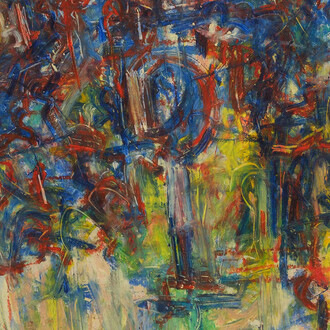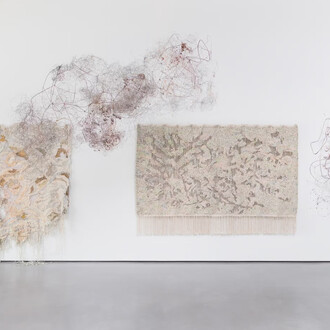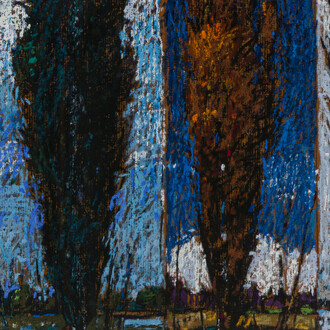These paintings are revenge fantasies, plain and simple… In this group of paintings I enact over-the-top revenge on the people and places that have hurt me most.
(Andrea Joyce Heimer)
Gaa is pleased to present Served cold, a new body of paintings by Andrea Joyce Heimer. While these works demonstrate Heimer’s dedication to exploring the theme of loneliness and the range of emotions that accompany this experience, they place a distinct focus on one emotion in particular: anger. Completed within the last six months, these ‘revenge fantasies’ confront painful realities and provide a physical conduit for allegorical anger, wrath, retribution, and revenge. Served Cold represents Heimer’s first solo exhibition with Gaa.
Functioning as visual memoirs, Heimer’s paintings explore the ‘origin story’ of an individual moment as it is mythically reimagined across her teeming compositions. Influenced by the ambiguity surrounding her own origin and closed adoption, Heimer utilizes her narrative-based painting practice as an outlet to process emotion, a method to unpack trauma, and a space to interpret her own story. The panoramic memories embedded within the resulting works in Served Cold span across her childhood, adolescence, and adulthood, addressing the anger evoked by particular people, places, and circumstances.
Ironically, but perhaps indicatively, the purpose of these ‘revenge fantasies’ does not involve any form of valid threat; rather, these works pave a path of psychological admonition through which Heimer achieves her vengeance. Certain spectacles of retaliation involve Heimer’s direct participation, as demonstrated in You were the coldest person I tried to love and the worst part is you think that coldness makes you interesting. I now feed you to an ice monster, an act you accept without struggle because you are too cool to care. Afterwards, I briefly think about how bad you were in bed., which depicts the artist enacting over-the-top revenge on her emotionally frozen ex, whom she feeds to an ice monster in an arctic sea. Others, such as The kitchen where I was told I was adopted just sat there, being a kitchen, as my life turned upside down. At least it could have had the decency to self destruct. devote importance to time and place, ruminating on the ways in which prolonged memory can intensify, proliferate, and transform into intensely personal myth over time.
Through her contemporary interpretation of narrative painting, Heimer creates and records her own history with the distinctive use of stylized symbols and iconography. Informed by the black- and red-figure techniques of Greek vase-painting, the narrative quality of Egyptian wall friezes, and the sumptuous flatness of Medieval paintings, tapestries, and illuminated manuscripts, Heimer forgoes traditional notions of perspective and depth to imbue a sense of presence and immediacy within these stories. The diaristic titles introduce another avenue for meaning and understanding, didactically recounting the events portrayed and thus forming a thread of connectivity between Heimer and the viewer.
As such, Heimer creates the direct antithesis to the loneliness she so painstakingly unpacks and explores – paintings which, through their insistence upon history, memory, and narrative, prevent anyone from feeling truly alone in their presence.
















